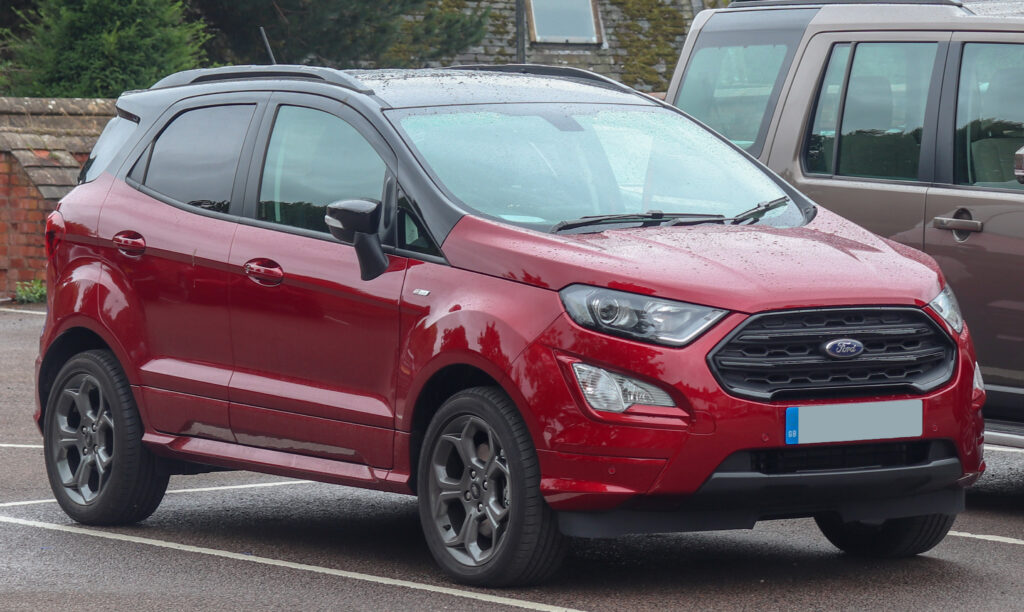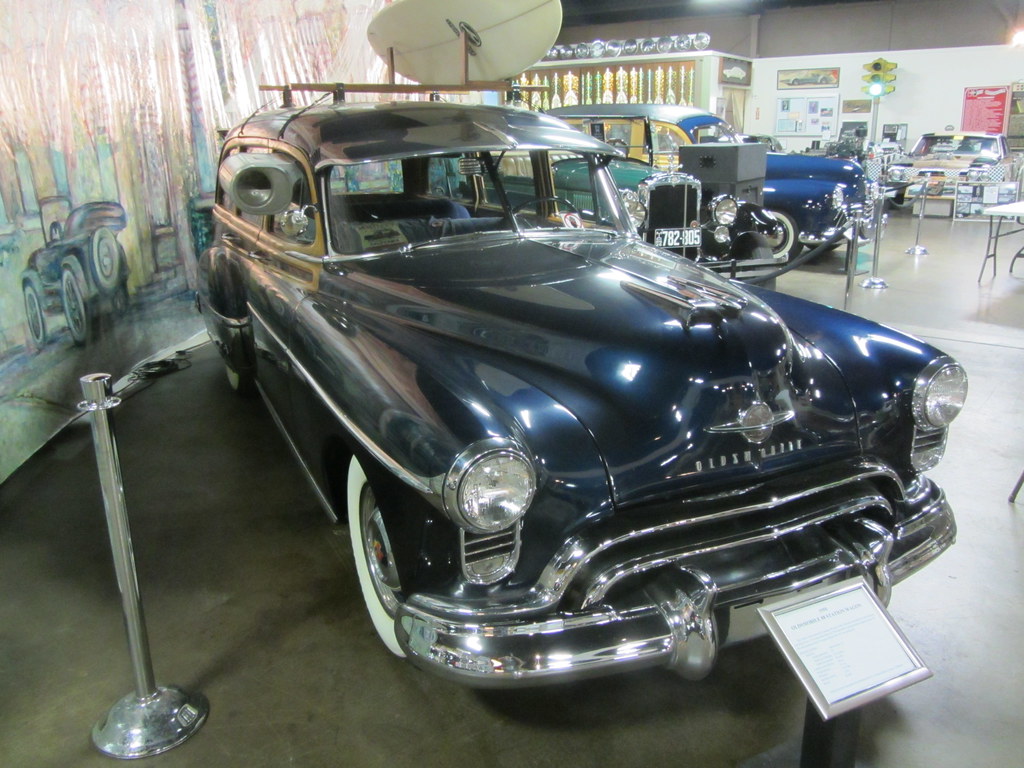
The deep, resonant growl of a powerful engine, the distinctive glint of polished chrome, and the unique aroma of a well-aged interior – for many Baby Boomers, these sensations are far more than mere sensory details. They are potent links to a cherished past, evoking an era when American automobiles were not just modes of transport but symbols of ambition, freedom, and a distinctive cultural identity. These vehicles, often the pride of their youth, are held in profound, nostalgic regard, remembered for their affordability, practicality, or the sheer audacity of their designs, embodying the optimism and innovation of their time.
However, as the relentless pace of change continues to reshape our world, the road ahead appears remarkably different when viewed through the eyes of a Millennial. This younger generation, forged by rapid technological advancements, a burgeoning environmental consciousness, and an altogether transformed economic landscape, often approaches these very same automotive legends with a critical gaze, sometimes even with an air of dismissive indifference. What was once celebrated as cool, ingeniously innovative, or the epitome of luxury, now frequently registers as outdated, impractical, or simply inefficient, vividly illustrating a generational chasm in what constitutes a truly desirable ride.
This isn’t merely a matter of differing tastes; it represents a fundamental divergence in priorities, core values, and the very definition of a car’s purpose and appeal. While Boomers might find profound satisfaction in the rich stories and the raw, unfiltered driving experience these vintage beauties offer, Millennials are decidedly more inclined to prioritize factors like superior fuel efficiency, seamless integration of modern technology, refined handling dynamics, and a significantly smaller environmental footprint. We are about to embark on an insightful journey, delving into some of these iconic vehicles to uncover precisely why these classic American rides, once the undisputed darlings of a generation, are now frequently overlooked, and sometimes even actively shunned, by today’s young drivers. Prepare to gain a deeper understanding of the stark generational divide that dramatically redefines automotive adoration.
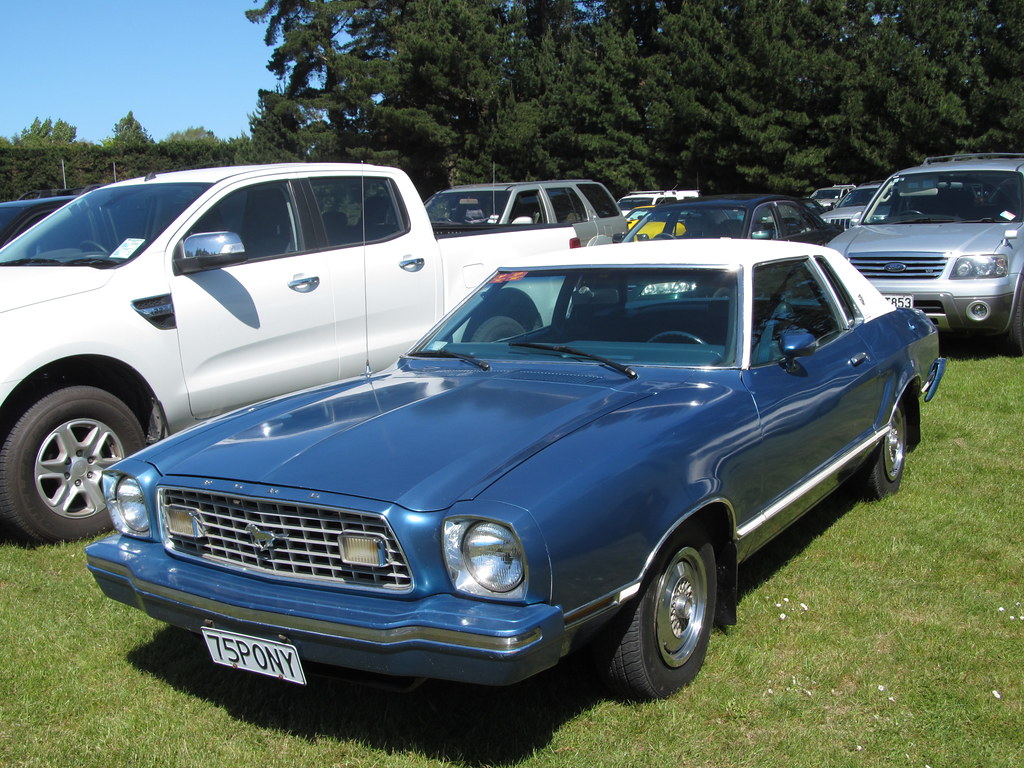
1. Ford Mustang II
For Baby Boomers, the Ford Mustang II occupies a complex but often sentimental space. Introduced during the tumultuous 1970s fuel crisis, it represented a necessary adaptation, a continuation of the beloved Mustang lineage, albeit in a more compact and economical package. This shift was largely driven by market demands for smaller, more fuel-efficient cars, and the Mustang II, with its compromises, was Ford’s effort to adapt the iconic pony car spirit to a challenging new era. It was, in essence, a strategic survival move for a nameplate deeply embedded in American culture, offering a practical solution in uncertain times.
Yet, for Millennials, the Mustang II frequently elicits a collective groan, often becoming a punchline in discussions about the Mustang’s storied history. Young enthusiasts largely criticize it for straying too far from the foundational principles of its muscle car predecessors, arguing it diluted the very essence of what made a Mustang special. They point to its often underwhelming performance capabilities, a significant deviation from the raw power associated with the name, and a design that many consider bland, lacking the aggressive lines and powerful stance of the original.
The generational disconnect surrounding the Mustang II is therefore quite pronounced. While Boomers might appreciate its historical context and its role in keeping the Mustang nameplate alive, Millennials tend to dismiss it as an unfortunate blip. It highlights how changing societal priorities – from unbridled power to fuel economy – can drastically redefine a vehicle’s legacy. For one generation, it was a practical, albeit less exciting, solution; for another, it represents a regrettable compromise in automotive heritage.
Car Model Information: 2023 Buick Envision Preferred
Name: Second generation
Caption: Ford Mustang II coupe
Aka: Ford Mustang II , Ford T5 (in Germany)
Class: Pony car,Subcompact car
Production: 1973–1978
ModelYears: 1974–1978
Predecessor: Ford Mustang (first generation)
Successor: Ford Mustang (third generation)
Assembly: Unbulleted list
Layout: Front-engine, rear-wheel-drive layout
BodyStyle: coupé,hatchback
Related: Ford Pinto,Ford Pinto
Manufacturer: Ford Motor Company
Engine: ubl
Transmission: ubl
Wheelbase: cvt
Length: cvt
Width: cvt
Height: cvt
Designer: Buck Mook, Dick Nesbitt
Categories: All articles with dead external links, All articles with unsourced statements, Articles with dead external links from April 2024, Articles with permanently dead external links, Articles with short description
Summary: The second-generation Ford Mustang, marketed as the Ford Mustang II, is a two- or three-door, four-passenger, front-engine/rear-drive pony car manufactured and marketed by Ford from 1973 until 1978. Introduced in September 1973 for the 1974 model year, the Mustang II arrived roughly coincident with the oil embargo of 1973 and subsequent fuel shortages. Developed under Lee Iacocca, it was an “entirely new kind of pony car.” Ford “decided to call it Mustang II, since it was a new type of pony car designed for an era of high gas prices and fuel shortages.”
The Mustang II was 490 lb (222 kg) lighter and almost 19 in (483 mm) shorter than the 1973 Mustang, and derived from the subcompact Pinto platform. While sharing a limited number of driveline components with the Pinto, the Mustang II employed an exclusive subframe, isolating its front suspension and engine mount subframe. The steering used a rack-and-pinion design.
Named Motor Trend’s 1974 Car of the Year and reaching over 1.1 million sales over four years of production, the Mustang II is noted simultaneously for both its marketing prescience and strong sales – while criticized as having abandoned essential aspects of the Mustang heritage and described, in a retrospective after 40 years since its introduction, as embodying the Malaise era.
Get more information about: Ford Mustang (second generation)
Buying a high-performing used car >>>
Brand: Ford Model: Mustang II
Price: $20,221 Mileage: 46,554 mi.
Read more about: Relive the Roaring ’60s: A High-Octane Journey Through 14 Legendary Cars That Defined a Golden Era of Automotive Innovation!
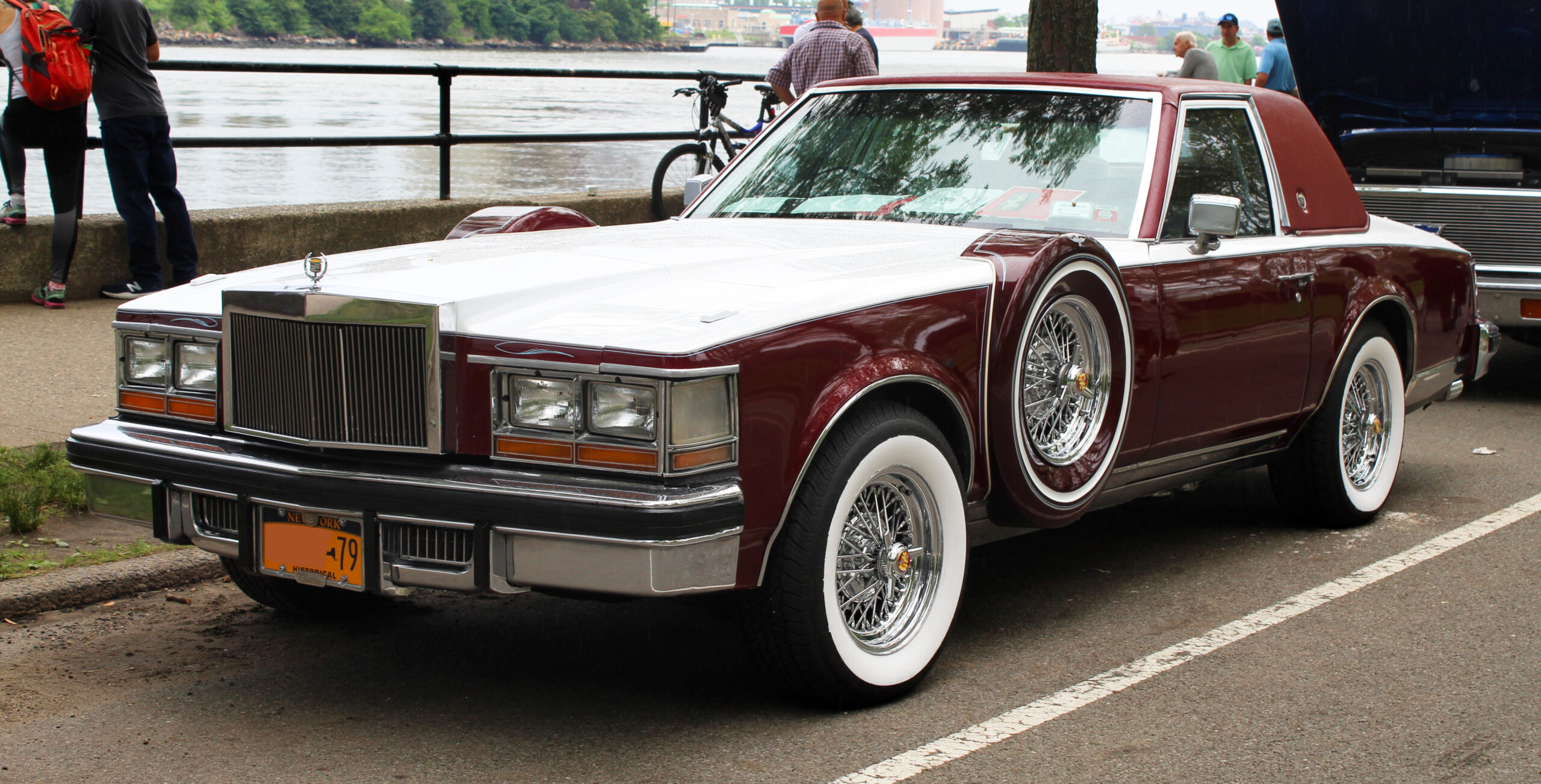
2. Cadillac Seville
The Cadillac Seville, for many Boomers, epitomized American automotive luxury and aspirational elegance. It was hailed as a premium American sedan that effortlessly combined lavish comfort with undeniable style, offering a sophisticated driving experience that was a hallmark of Cadillac’s prestige. The Seville was more than just a car; it was a powerful statement of success and refined taste, cherished for its opulent interiors and smooth, commanding road presence, making it a favorite among discerning buyers of its time.
In stark contrast, younger drivers often view the Seville through an entirely different lens, frequently seeing it as a tangible symbol of the perceived excesses of past American automotive design. Its substantial body and notorious fuel inefficiency are particularly glaring points of criticism for Millennials, clashing sharply with contemporary values emphasizing environmental stewardship and practical, economical operation. The sheer physical footprint of the vehicle, once a sign of undisputed grandeur, now often appears cumbersome and wasteful, especially when navigating crowded urban environments.
This pronounced generational shift towards more compact, fuel-efficient, and environmentally conscious vehicles has, in effect, rendered the Seville’s original incarnation largely outdated for a significant portion of the younger demographic. What was once an icon of aspiration and sophisticated taste is now often castigated as a gas-guzzling behemoth, a potent reminder of a bygone era when energy consumption was far less of a public or personal concern, and size was almost synonymous with luxury.
Product on Amazon: MOOG ES429RL Steering Tie Rod End for Ford Mustang II
Brand: MOOG
Binding: Automotive Product Group: Automotive Parts and Accessories
Price: 24.04 USD
Rating: 4.7 Total reviews: 44
Material: Metal
Item dimensions L x W x H: 6 x 3.25 x 1.75 inches
Bearing Number: 1
Specification Met: Various
Features:
1. COMPATIBILITY – Fits 1974-1976 Ford Mustang II; 1977-1977 Ford Mustang II; 1978-1978 Ford Mustang II; 1973-1973 Ford Pinto; 1974-1980 Ford Pinto; 1975-1980 Mercury Bobcat
2. RESTORES LIKE-NEW STEERING — Patented pressed-in cover plate seals out debris and minimizes looseness, reducing bearing wear and promoting longer life
3. GREASEABLE SOCKET — Inhibits rust and wear by allowing new lubricant to flush debris
4. ABSORBS IMPACT — Belleville preload washer helps keep the bearing package tight as bearings wear
5. PROBLEM SOLVER GUSHER BEARING — Metal-to-metal design provides strength and allows grease to flow through bearing surface for reduced friction and long life
Shopping on Amazon >>
Car Model Information: 1985 Cadillac Seville Base
Name: Cadillac Seville
Caption: 1998–2004 Cadillac Seville
Manufacturer: Cadillac
Production: 1975–2003
ModelYears: 1976–2004
Class: luxury car
Layout: FR layout
Predecessor: Cadillac Calais
Successor: Cadillac STS
Categories: 1980s cars, 1990s cars, All articles with unsourced statements, Articles with short description, Articles with unsourced statements from October 2016
Summary: The Cadillac Seville is a mid-size luxury car manufactured by Cadillac from the 1976 to 2004 model years as a smaller-sized, premium model. It was replaced by the STS in 2004 for the 2005 model year.
Get more information about: Cadillac Seville
Buying a high-performing used car >>>
Brand: Cadillac Model: Seville
Price: $13,500 Mileage: 73,400 mi.
Read more about: Beyond Nostalgia: 12 Classic Boomer Vehicles Younger Generations Dodge and Why They’ve Lost Their Luster
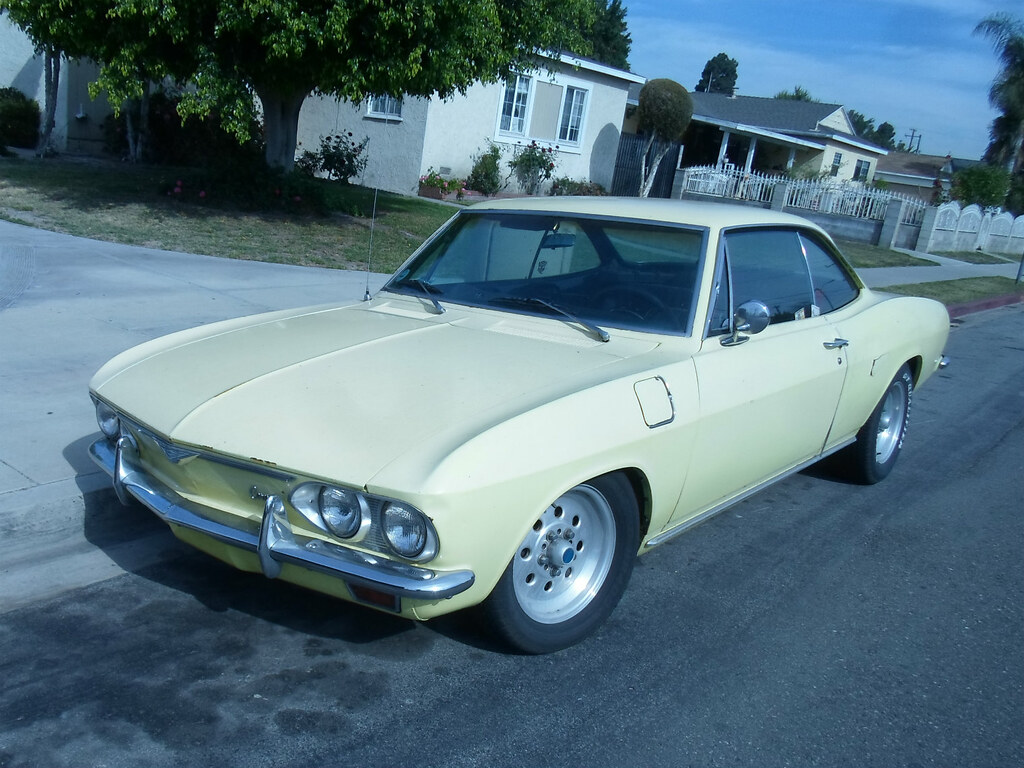
3. Chevrolet Corvair
The Chevrolet Corvair holds a genuinely unique, and rather contentious, position in American automotive history. For many Boomers, its introduction heralded a bold and innovative leap in domestic car design, presenting a radical departure from conventional wisdom. With its distinctive rear-mounted, air-cooled engine and audacious approach to compact car engineering, the Corvair undoubtedly captivated a generation eager for something truly different. It was an ambitious, even daring, project, designed to challenge the established front-engine, rear-wheel-drive orthodoxy that dominated the American market.
However, the Corvair’s pioneering spirit is, more often than not, severely overshadowed by its highly publicized and tumultuous reputation, especially among younger automotive enthusiasts. Millennials are acutely aware of, and quick to highlight, the significant handling issues and serious safety concerns that plagued various iterations of the model. These flaws were famously brought to national attention by consumer advocate Ralph Nader’s book, “Unsafe at Any Speed.” These historical criticisms continue to profoundly influence contemporary perceptions, making the Corvair a less than desirable classic for a generation prioritizing modern safety standards.
For Millennials, the legacy of the Corvair extends beyond its groundbreaking engineering to encompass a poignant cautionary tale about automotive design. The very characteristics that made it so unique, such as its unconventional swing-axle suspension, were directly linked to handling quirks deemed unacceptable by today’s rigorous safety standards. Consequently, a car that Boomers might view as a pioneering, albeit flawed, engineering experiment, is often summarily dismissed by Millennials as fundamentally unsafe and unreliable, underscoring how dramatically historical context and perceived safety records can impact desirability.
Car Model Information: 1964 Chevrolet Corvair Monza
Caption: 1964 Chevrolet Corvair Monza
Name: Chevrolet Corvair
Manufacturer: Chevrolet
Production: 1960–1969
Platform: GM Z platform
Chassis: Unibody
ModelYears: 1960–1969
Assembly: United States,Kansas City, Missouri,Oakland, California,Van Nuys,St. Louis,Flint, Michigan,Belgium,Canada,Mexico,South Africa,Switzerland,Venezuela
Class: Compact car
Successor: Chevrolet Vega
Layout: Rear-engine, rear-wheel-drive layout
Categories: All Wikipedia articles written in American English, All articles lacking in-text citations, All articles needing additional references, All articles with dead external links, All articles with specifically marked weasel-worded phrases
Summary: The Chevrolet Corvair is a rear-engined, air-cooled compact car manufactured and marketed by Chevrolet over two generations between 1960 and 1969. The Corvair was a response to the increasing popularity of small, fuel-efficient automobiles, particularly the imported Volkswagen Beetle and American-built compacts like the Rambler American and Studebaker Lark.
The first generation (1960–1964) was offered as a four-door sedan, two-door coupe, convertible, and four-door station wagon. A two- and four-door hardtop and a convertible were available second-generation (1965–1969) variants. The Corvair platform was also offered as a subseries known as the Corvair 95 (1961–1965), which consisted of a passenger van, commercial van, and pickup truck variant. Total production was approximately 1.8 million vehicles from 1960 until 1969.
The name “Corvair” was first applied in 1954 to a Corvette-based concept with a hardtop fastback-styled roof, part of the Motorama traveling exhibition. When applied to the production models, the “air” part referenced the engine’s cooling system.
A prominent aspect of the Corvair’s legacy derives from controversy surrounding the handling of early models equipped with rear swing axles, articulated aggressively by Ralph Nader’s Unsafe at Any Speed but tempered by a 1972 Texas A&M University safety commission report for the National Highway Traffic Safety Administration (NHTSA) which found that the 1960–1963 Corvair possessed no greater potential for loss of control in extreme situations than contemporary compacts.
To better counter popular inexpensive subcompact competitors, notably the Beetle and Japanese imports such as the Datsun 510, GM replaced the Corvair with the more conventional Chevrolet Vega in 1970.
Get more information about: Chevrolet Corvair
Buying a high-performing used car >>>
Brand: Chevrolet Model: Corvair
Price: $29,988 Mileage: 74,787 mi.
Read more about: Relive the Roaring ’60s: A High-Octane Journey Through 14 Legendary Cars That Defined a Golden Era of Automotive Innovation!
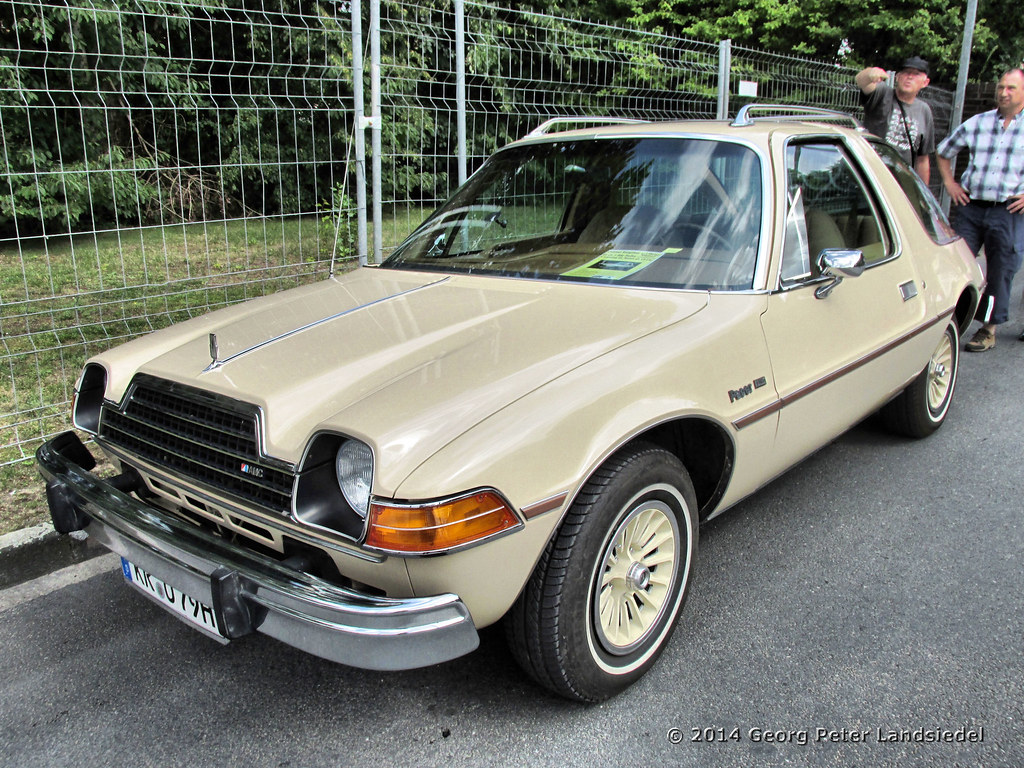
4. AMC Pacer
The AMC Pacer—now that’s a car that truly dared to defy conventional automotive design, for better or for worse. Boomers might recall its grand introduction with a certain degree of fascination, as it was enthusiastically touted for its perceived innovation and undeniably unique styling. Its remarkably wide, almost bulbous, bubble-like appearance, coupled with an unusually expansive glass area, certainly made a bold statement. It represented an ambitious vision, a compact car designed from the inside out to maximize interior space, and it was an earnest attempt to redefine what a small American car could be.
Fast forward to the present day, and Millennials frequently regard the Pacer with an intriguing mix of amusement and outright bewilderment. Young drivers overwhelmingly tend to find its signature bubble-like appearance oddly proportioned, often bordering on the edge of automotive caricature, and its overall design is frequently criticized as being inefficient. What was once celebrated as a daring attempt at breaking the mold and pushing design boundaries is now more commonly viewed as an unfortunate misstep, a design experiment that, in retrospect, arguably went awry.
The Pacer’s profoundly unconventional aesthetics, originally conceived to be boldly forward-thinking and space-efficient, have, ironically, ultimately become its most significant detractor for younger generations. What was once seen as quirky or even groundbreaking by Boomers now struggles considerably to find appreciation among those who predominantly favor sleek, aerodynamic lines and a more universally accepted sense of visual harmony. Its distinctive, almost alien, aesthetic ensures it is remembered, but often not for the reasons its original designers might have hoped.
Product on Amazon: Hot Wheels Car Culture Circuit Legend, Premium 1:64 Scale Die-Cast Chevy Corvair Yenko Stinger Car, Collectable Vehicle
Brand: Hot Wheels
Binding: Toy Product Group: Toy
Price: 11.95 USD
Rating: 4.8 Total reviews: 975
Features:
1. The Hot Wheels Car Culture Circuit Legend line features awesome 1:64 scale vehicles with realistic castings and authentic decos.
2. This premium assortment features a variety of special categories and themes that appeal to kids and collectors alike.
3. Kids ages 3 and up and collectors will love the realistic detail and the fantastic features of both new and retro vehicles for either play or display.
4. New Hot Wheels models and castings enhance collectability.
5. Car enthusiasts will find a brilliant selection of vehicles known around the world to add to their collections.
Shopping on Amazon >>
Read more about: Beyond Nostalgia: 12 Classic Boomer Vehicles Younger Generations Dodge and Why They’ve Lost Their Luster
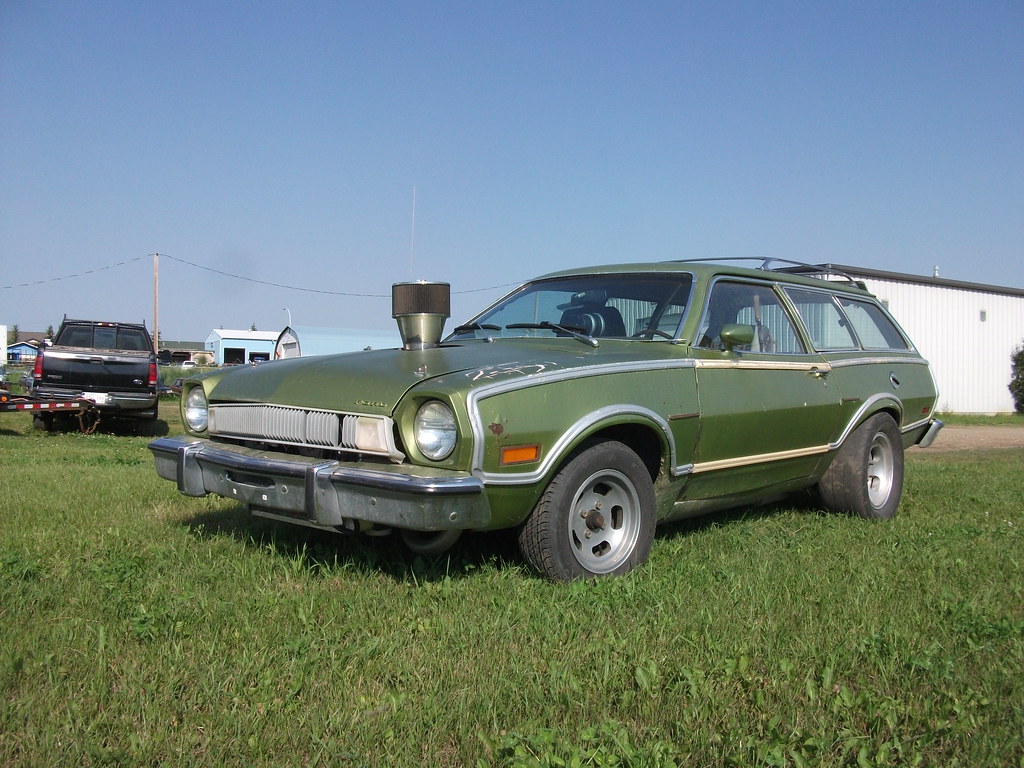
5. Ford Pinto
The Ford Pinto, a compact car that achieved substantial popularity throughout the 1970s, might well conjure memories of straightforward affordability and commendable practicality for many Boomers. In its prime, it represented a no-frills, economical transportation option during a period when families were actively seeking sensible and budget-friendly vehicles, particularly in the immediate aftermath of escalating fuel costs. For a significant number of owners, it served as an unpretentious workhorse that competently fulfilled its purpose without much in the way of extravagant fanfare.
However, among subsequent generations, the Pinto has become utterly infamous for its severe and widely publicized safety issues, most notably the harrowing risk of its fuel tank rupturing and igniting upon rear impact. This dark and indelible stain on its historical record is the primary, and often singular, lens through which Millennials perceive the car today. While Boomers might occasionally reminisce about its initial affordability and its practical role, Millennials overwhelmingly identify the Pinto as a demonstrably dangerous vehicle, a stark symbol of corporate negligence, and a sobering reminder of design flaws that tragically led to loss of life.
The perceptual chasm concerning the Ford Pinto is arguably one of the deepest and most unforgiving on this entire list. For one generation, it functioned as a practical, accessible solution to everyday transportation requirements; for another, it stands as a damning byword for automotive hazard and a severe lapse in consumer protection. The original historical context of its widespread popularity is now almost entirely eclipsed by its catastrophic safety record, cementing its status as one of the most emphatically shunned vehicles by younger drivers.
Car Model Information: 1978 Ford Pinto RUNABOUT HATCHBACK
Name: Ford Pinto
Caption: Ford Pinto
Manufacturer: Ford Motor Company
Aka: Mercury Bobcat
Production: September 1970 – July 1980
ModelYears: 1971–1980 (Pinto),1974–1980 (Bobcat)
Assembly: Edison, New Jersey,Milpitas, California
Designer: Robert Eidschun (1968)
Class: Subcompact car
BodyStyle: Sedan (automobile),sedan delivery,station wagon,hatchback
Related: #Mercury Bobcat (1974–1980),Ford Mustang (second generation)
Layout: Front-engine, rear-wheel-drive layout
Chassis: Unibody
Engine: unbulleted list
Abbr: on
Disp: Ford Cologne engine
Transmission: unbulleted list
Wheelbase: 94.0 in
Length: 163 in
Width: 69.4 in
Height: 50 in
Weight: convert
Predecessor: Ford Cortina#Mark II (1966–1970)
Successor: Ford Escort (North America)
Categories: 1980s cars, Articles with short description, Cars discontinued in 1980, Cars introduced in 1970, Commons category link from Wikidata
Summary: The Ford Pinto is a subcompact car that was manufactured and marketed by Ford Motor Company in North America from 1970 until 1980. The Pinto was the first subcompact vehicle produced by Ford in North America.
The Pinto was marketed in three body styles throughout its production: a two-door fastback sedan with a trunk, a three-door hatchback, and a two-door station wagon. Mercury offered rebadged versions of the Pinto as the Mercury Bobcat from 1975 until 1980 (1974–1980 in Canada). Over three million Pintos were produced over its ten-year production run, outproducing the combined totals of its domestic rivals, the Chevrolet Vega and the AMC Gremlin. The Pinto and Mercury Bobcat were produced at Edison Assembly in Edison, New Jersey, St. Thomas Assembly in Southwold, Ontario, and San Jose Assembly in Milpitas, California.
Since the 1970s, the safety reputation of the Pinto has generated controversy. Its fuel-tank design attracted both media and government scrutiny after several deadly fires occurred when the tanks ruptured in rear-end collisions. A subsequent analysis of the overall safety of the Pinto suggested it was comparable to other 1970s subcompact cars. The safety issues surrounding the Pinto and the subsequent response by Ford have been cited widely as business ethics and tort reform case studies.
Get more information about: Ford Pinto
Buying a high-performing used car >>>
Brand: Ford Model: Pinto
Price: $18,995 Mileage: 88,217 mi.
Read more about: Relive the Roaring ’60s: A High-Octane Journey Through 14 Legendary Cars That Defined a Golden Era of Automotive Innovation!
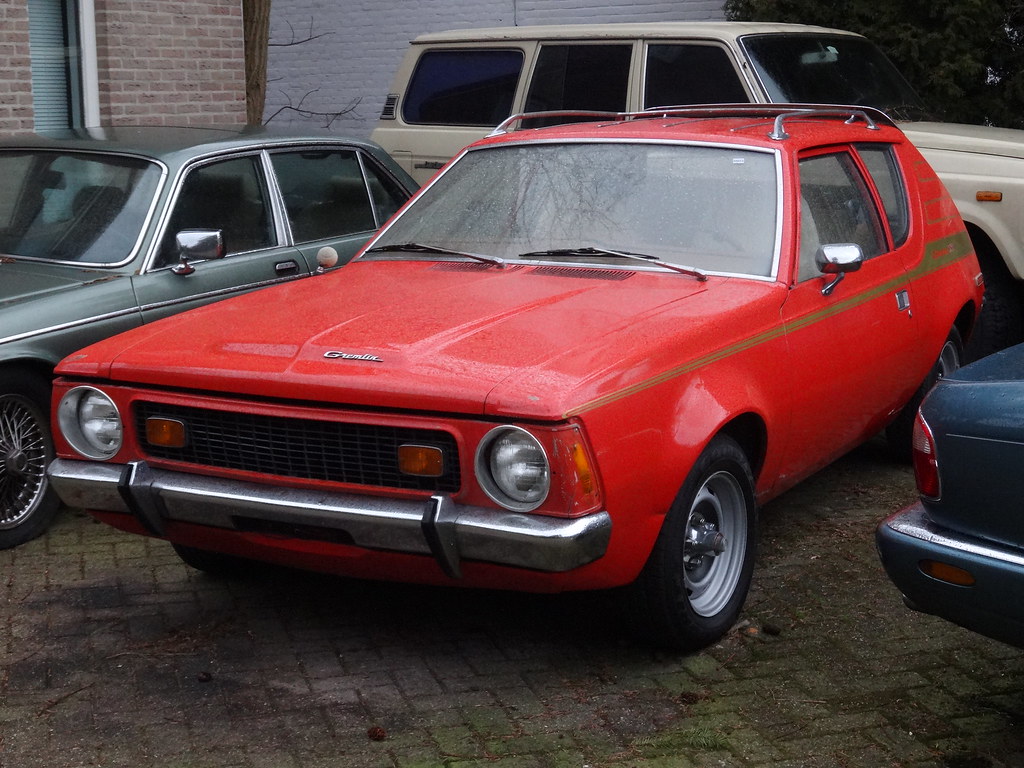
6. AMC Gremlin
The AMC Gremlin stands as another prime example of a vehicle that either inspires fervent affection or outright derision, showcasing a truly “love it or hate it” design philosophy. For many Boomers, looking back at the Gremlin often evokes a distinct sense of nostalgia, an appreciation for its utterly unique, abbreviated styling and its bold, if somewhat eccentric, attempt to carve out a niche in the burgeoning subcompact market. It emerged as an economical American subcompact, ingeniously conceived as a direct response to the escalating popularity of imported small cars, and its distinctive “chopped” rear end unquestionably ensured it stood out vividly.
For the Millennial demographic, however, the Gremlin typically falls decisively into the “hate it” category, or at the very least, into the realm of comedic peculiarity. Younger drivers, almost without exception, tend to find its unusual aesthetics profoundly unappealing, often deeming its truncated rear and overall proportions jarring, even comical. Beyond its polarizing visual appeal, the Gremlin also consistently delivered less-than-stellar performance metrics, further solidifying its undesirability among those who expect more from a driving experience.
The Gremlin’s daring design, which was originally intended to be a clever and cost-effective method of re-purposing existing platforms for a new market segment, has, ironically, instead become a visual punchline for countless individuals. What was once perceived as merely quirky or commendably economical by Boomers is now predominantly viewed as an outright oddity, a vehicle with very little to commend it in terms of performance, refined aesthetics, or lasting style. The very elements that made it so singular ensure its prominent place on the expanding list of cars that Millennials are quite content to bypass entirely.
Product on Amazon: AMT 1/25 1977 Ford Pinto, Model Kit, AMT1129M
Brand: AMT
Binding: Product Group: Toy
Price: 30.19 USD
Rating: 4.2 Total reviews: 66
Age Range (Description): Kid
Color: White
Theme: Vehicle
Item dimensions L x W x H: 1 x 1 x 1 inches
Features:
1. Molded-in white for easy painting
2. All-new decal sheet loaded with optional fun designs
3. Vinyl tires
Shopping on Amazon >>
Read more about: Beyond Nostalgia: 12 Classic Boomer Vehicles Younger Generations Dodge and Why They’ve Lost Their Luster
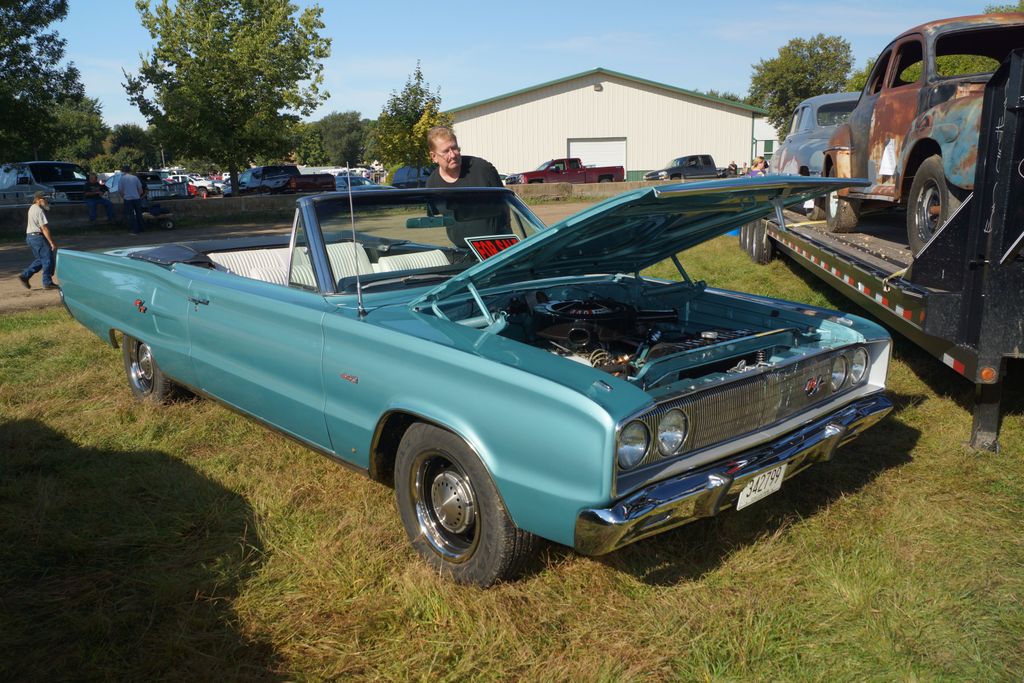
7. Dodge Coronet
In its prime, the Dodge Coronet was widely recognized and largely embraced as a truly solid and eminently reliable family car. For the Boomer generation, it represented an eminently sensible and dependable choice, a steadfast sedan or practical wagon that was more than capable of handling the relentless demands of daily commutes and extended family road trips with commendable ease. It served faithfully as a quintessential workhorse of the American road, offering a straightforward design and unpretentious utility that perfectly embodied the practical needs of numerous households throughout its extensive production run.
However, Millennials, with their distinctly modern automotive sensibilities, often summarily dismiss the Coronet for what they overwhelmingly perceive as its plain, uninspired design and its considerable, almost excessive, size. In an automotive landscape where aesthetic appeal is increasingly scrutinized and overall efficiency is held as paramount, the Coronet’s understated, almost anonymous, appearance simply fails to capture the attention or ignite the passion of younger buyers. Its substantial dimensions, once a proud hallmark of spacious comfort, now appear drastically out of step with contemporary automotive values.
This pronounced shift in overarching automotive values unmistakably positions the Coronet as a prime example of a car that has been effectively left behind by the relentless evolution of public tastes and technological advancements. Its inherently simple, robust, and utilitarian nature, once celebrated as a distinct virtue, is now predominantly viewed as unremarkable, even bland, and its generous size as a glaring symbol of inefficiency. The generational gap becomes acutely evident here, where a vehicle once lauded for its unwavering practicality is now largely overlooked by a generation demanding more from a car.
Let’s continue our journey through the annals of automotive history, venturing past those initial contenders to uncover even more legendary rides that once graced Boomer driveways but now evoke little more than a shrug, or perhaps a bewildered head-tilt, from the younger generation. It’s a fascinating study in shifting values, a powerful testament to how rapidly the definition of a “cool car” can evolve across just a few decades. Prepare yourselves, gearheads and curious observers alike, for another round of glorious iron that’s struggling to make a comeback in the hearts of Millennials.
Product on Amazon: MPC 1968 Dodge Coronet Hardtop w/Trailer 1:25 Scale Model Kit
Brand: MPC
Binding: Office Product Product Group: Home
Price: 31.99 USD
Rating: 5.0 Total reviews: 16
Age Range (Description): Adult
Color: unpainted
Theme: Transportation
Item dimensions L x W x H: 9.25 x 3.75 x 6.5 inches
Features:
1. 1:25 scale, skill level 2, paint & glue required
2. 148 parts
3. Molded in white, clear, transparent red, and some chrome-plated parts
4. Black vinyl tires
5. Metal axle
Shopping on Amazon >>
Car Model Information: 1967 Dodge Coronet Restomod
Name: Dodge Coronet
Caption: 1967 Dodge Coronet R/T
Manufacturer: Dodge
Production: 1949–1959,1965–1976
Class: Full-size
Predecessor: Dodge Custom
Successor: Dodge Dart
Layout: FR layout
Categories: 1950s cars, 1970s cars, All articles with dead external links, All articles with unsourced statements, Articles with dead external links from June 2016
Summary: The Dodge Coronet is an automobile that was marketed by Dodge in seven generations, and shared nameplates with the same bodyshell with varying levels of equipment installed. Introduced as a full-size car in 1949, it was the division’s highest trim line and moved to the lowest level starting in 1955 through 1959. The name was reintroduced on intermediate-sized models from the 1965 until 1976 model years. Muscle car versions were available starting in 1965 with the 383 and 426 wedge cu in (7.0 L) Chrysler RB engine, followed in 1966 by the powerful 426 cu in (7.0 L) Chrysler Hemi. Other performance models included the “Superbee”, and featured, the 383 cu in (6.3 L) Magnum, among other engine options. The nameplate “coronet” is a type of crown worn by royalty.
In the 1980s, the Coronet was used on Dodge models marketed in Colombia.
Get more information about: Dodge Coronet
Buying a high-performing used car >>>
Brand: Dodge Model: Coronet
Price: $46,500 Mileage: 2,818 mi.
Read more about: Beyond Nostalgia: 12 Classic Boomer Vehicles Younger Generations Dodge and Why They’ve Lost Their Luster
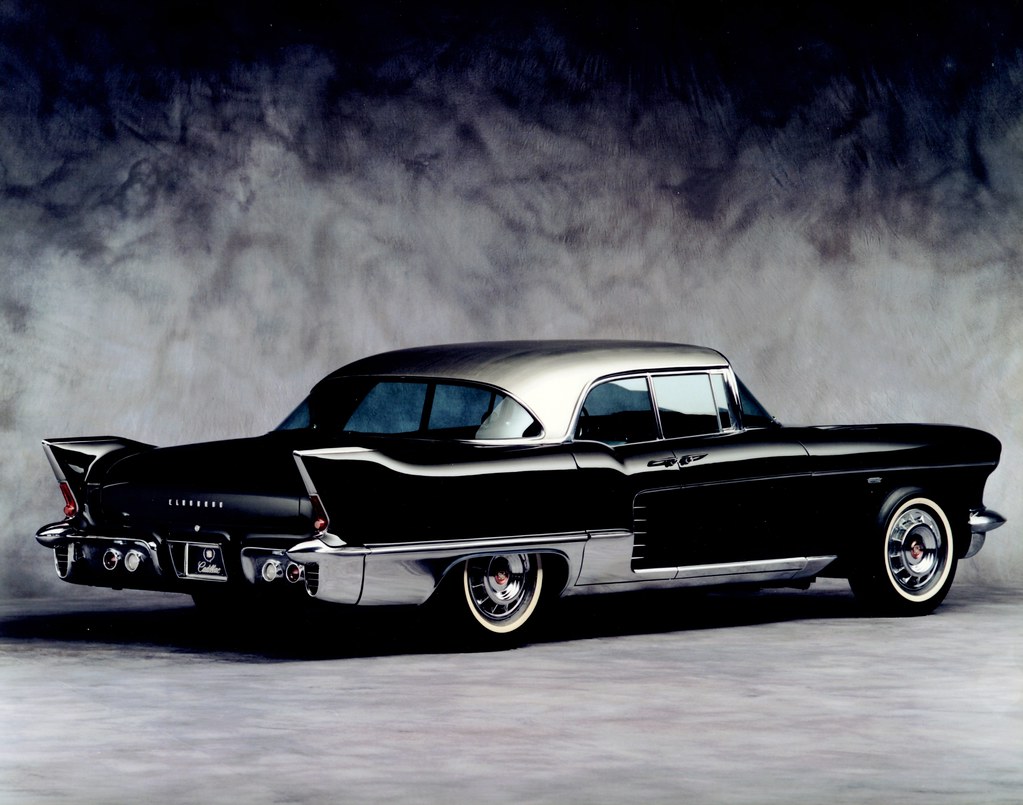
8. Cadillac Eldorado
The Cadillac Eldorado, oh, what a majestic beast it was! For Boomers, this wasn’t just a car; it was a rolling testament to American luxury and opulent excess, a true symbol of high status and success. Cherished for its lavish comfort, plush interiors, and the sheer undeniable presence it commanded on the road, the Eldorado was the ride of choice for those who had “made it,” a powerful statement of affluence and refined taste that turned heads and solidified its place as a favorite among affluent buyers for decades. It embodied an era where bigger truly meant better, and comfort was king, a direct reflection of post-war prosperity and the American dream writ large on four wheels.
However, for a Millennial, the Eldorado often presents a somewhat perplexing, even bewildering, sight. They are quick to criticize its enormous size and notoriously poor fuel economy, factors that clash sharply with their deeply ingrained values of environmental consciousness and practical, economical operation. The sheer physical footprint of the Eldorado, once a proud hallmark of spacious comfort and grandeur, now often appears cumbersome, even wasteful, particularly when attempting to navigate the increasingly congested and compact urban environments of today. It’s hard to reconcile that land yacht with a parallel parking spot, let alone the rising cost of gasoline.
This pronounced generational shift reflects a fundamental reevaluation of what constitutes luxury and desirability in an automobile. While Boomers reveled in the Eldorado’s sheer scale and the unapologetic comfort it offered, younger generations view these very attributes as significant drawbacks, seeing them as direct contributors to inefficiency. What was once a beacon of aspirational design is now often castigated as a gas-guzzling behemoth, a potent reminder of a bygone era when energy consumption was a far less pressing public or personal concern, and size was almost synonymous with the epitome of automotive prestige.
Ultimately, the powerful V8 engines and sumptuous ride quality that defined the Eldorado’s appeal for Boomers are simply not enough to overcome its perceived practical shortcomings for Millennials. The allure of its classic design and luxurious interiors is undeniable, but the modern driver’s emphasis on sustainability, urban maneuverability, and lower running costs means this once-revered symbol of automotive grandeur is now largely relegated to collector status, a beautiful relic admired from a distance rather than a preferred daily companion.
Product on Amazon: Matchbox 1975 Cadillac Eldorado Convertible, 1:64 Scale, Green, 2/6 Series
Brand: Mattel
Binding: Product Group: Toy
Price: 7.99 USD
Rating: 3.5 Total reviews: 3
Features:
1. SCALE: Precision-crafted 1:64 scale die-cast model, perfect for collectors and enthusiasts
2. DESIGN: Beautifully detailed green exterior capturing the iconic 1975 Cadillac Eldorado Convertible styling
3. COLLECTIBLE SERIES: Part of the 2/6 series, making it a valuable addition to any Matchbox collection
4. AUTHENTIC DETAILS: Features realistic wheels, chrome accents, and distinctive Cadillac front grille design
5. DISPLAY-READY: Compact size perfect for showcasing in display cases while maintaining impressive detail accuracy
Shopping on Amazon >>
Car Model Information: 1976 Cadillac Eldorado Convertible
Caption: 1963 Cadillac Eldorado Convertible
Name: Cadillac Eldorado
Manufacturer: Cadillac
Production: 1952–2002
Layout: Front-engine, rear-wheel-drive layout
Aka: Cadillac Fleetwood Eldorado
Class: Personal luxury car
Successor: Cadillac CTS
Categories: 1960s cars, 1970s cars, 1980s cars, 1990s cars, 2000s cars
Summary: The Cadillac Eldorado is a luxury car manufactured and marketed by the Cadillac Motor Car Division of General Motors from 1952 until 2002, over twelve generations.
The Eldorado was at or near the top of the Cadillac product line. The original 1953 Eldorado convertible and the Eldorado Brougham models of 1957–1960 had distinct bodyshells and were the most expensive models offered by Cadillac during those years. The Eldorado was never less than second in price after the Cadillac Series 75 limousine until 1966. Beginning in 1967, the Eldorado retained its premium position in the Cadillac price structure, but was manufactured in high volumes on a unique, two-door personal luxury car platform.
The Eldorado carried the Fleetwood designation from 1965 through 1972, and was seen as a modern revival of the pre-war Cadillac V-12 and Cadillac V-16 roadsters and convertibles.
Get more information about: Cadillac Eldorado
Buying a high-performing used car >>>
Brand: Cadillac Model: Eldorado
Price: $29,499 Mileage: 31,898 mi.
Read more about: Relive the Roaring ’60s: A High-Octane Journey Through 14 Legendary Cars That Defined a Golden Era of Automotive Innovation!

9. Mercury Cougar
When the Mercury Cougar first roared onto the scene, it carved out a unique space as an upscale counterpart to the ever-popular Ford Mustang. Boomers often recall it with immense reverence, appreciating its sophisticated blend of elegance and underlying muscle car vibe. With a range of potent V8 engines under its hood and interiors that exuded a distinct sense of luxury, the Cougar offered a more refined, comfortable, yet still performance-oriented driving experience. It was a statement car that provided both a powerful punch and a comfortable cruise, a highly desirable combination for its time, truly marrying muscle with a touch of class.
Yet, among Millennials, the Mercury Cougar tends to spark a more ambivalent reaction, often being summarily dismissed for what they perceive as an “unnecessary deviation” from the Mustang’s more classic, raw appeal. While they might acknowledge its stylish design, the Cougar’s substantial size and less-than-stellar fuel efficiency are significant detractors. For a generation that values agility and economy, the idea of a “luxury Mustang” often translates to a heavier, thirstier, and ultimately less exciting proposition than the pure, unadulterated pony car it sought to upscale.
The Cougar’s challenge, therefore, lies in its positioning and the shifting perception of its core identity. What was once seen as a sophisticated evolution, offering a more mature and luxurious take on the muscle car formula by Boomers, is now viewed by Millennials as an attempt to fix something that wasn’t broken, or perhaps even an effort to dilute the pure, unbridled spirit that made the Mustang so iconic. Its identity as an “upscale counterpart” ironically makes it less appealing when compared to the simpler, more focused performance of its sibling.
Despite its potential appeal with its stylish design and powerful engines, the lack of modern features, higher maintenance costs, and that nagging perception of being an “older generation’s car” further compound its undesirability. Younger buyers are actively seeking vehicles that embody contemporary performance, efficiency standards, and connectivity, making the Cougar, with all its vintage charm, a difficult sell in a market dominated by different priorities. Its elegant lines might be timeless, but its practical realities are decidedly not.
Product on Amazon: Hot Wheels 69 Mercury Cougar Eliminator (Teal), Muscle Mania 3/5
Brand: Hot Wheels
Binding: Product Group: Toy
Price: 5.99 USD
Rating: 5.0 Total reviews: 19
Features:
1. Collectible Die-Cast: This 1:64 scale Hot Wheels model car is a highly detailed and accurately sculpted replica of the iconic 1969 Mercury Cougar Eliminator.
2. Teal Color Scheme: The car features a sleek teal paint job, capturing the essence of the classic muscle car era.
3. Part of Muscle Mania Series: This model belongs to the Muscle Mania series, dedicated to celebrating the golden age of American muscle cars.
4. Detailed Exterior: The die-cast model showcases intricate details like the distinctive front grille, sculpted body lines, and iconic Cougar emblems.
5. Collectible Value: With its eye-catching design and limited production run, this Hot Wheels 1969 Mercury Cougar Eliminator is a must-have for any die-cast car enthusiast or muscle car aficionado.
Shopping on Amazon >>
Car Model Information: 1995 Mercury Cougar XR7
Name: Mercury Cougar
Caption: 1969 Mercury Cougar (first generation)
Manufacturer: Mercury (automobile)
Layout: Front-engine, rear-wheel-drive layout
ModelYears: 1967–1997,1999–2002
Class: Pony car,Personal luxury car,Mid-size car,Sport compact
Categories: 1960s cars, 1970s cars, 1980s cars, 1990s cars, 2000s cars
Summary: The Mercury Cougar is a series of automobiles that was sold by Mercury from 1967 to 2002. The model line is a diverse series of vehicles; though the Cougar nameplate is most commonly associated with two-door coupes, at various stages in its production, the model also was offered as a convertible and a hatchback. During its production as the mid-size Mercury line, the Cougar was also offered as a four-door sedan and five-door station wagon.
In production for 34 years across eight generations (skipping the 1998 model year), the Cougar is second only to the Grand Marquis (36 years) in the Mercury line for production longevity. 2,972,784 examples were produced, making it the highest-selling Mercury vehicle. During the 1970s and 1980s, the marketing of the Mercury division was closely associated with the Cougar, with promotional materials advertising Mercury dealers as “The Sign of the Cat” with big cats atop Lincoln-Mercury dealer signs. Cat-related nameplates were adopted by other Mercury lines, including the Bobcat and Lynx.
During its production, the Cougar was assembled at the Dearborn Assembly Plant (part of the Ford River Rouge Complex) in Dearborn, Michigan from 1967 until 1973, San Jose Assembly (Milpitas, California) from 1968 into early 1969, Lorain Assembly (Lorain, Ohio) from 1974 until 1997, and at Flat Rock Assembly (Flat Rock, Michigan) from 1999 through 2002.
Get more information about: Mercury Cougar
Buying a high-performing used car >>>
Brand: Mercury Model: Cougar
Price: $10,995 Mileage: 37,589 mi.
Read more about: Relive the Roaring ’60s: A High-Octane Journey Through 14 Legendary Cars That Defined a Golden Era of Automotive Innovation!
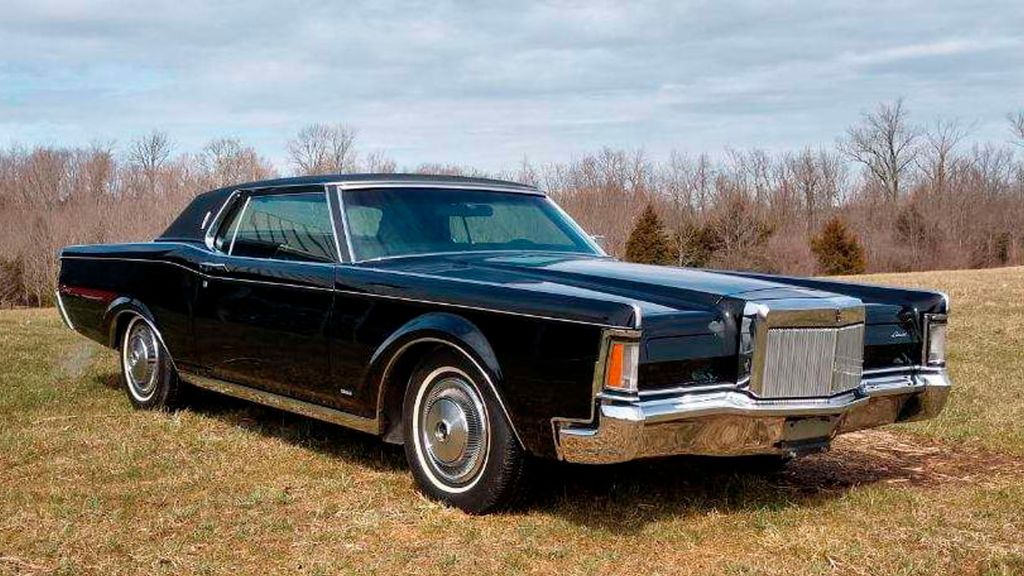
10. Lincoln Continental Mark IV
Ah, the Lincoln Continental Mark IV – a car that epitomized American grand touring luxury for many Boomers, and boy, did it do it with style! This machine, produced from 1972 to 1976, was iconic for its distinctive design, particularly those instantly recognizable opera windows and its impossibly long, sleek body. Powered by a mighty 460 cubic inch V8 engine, the Mark IV promised and delivered a smooth, commanding, and undeniably powerful ride. It wasn’t just transport; it was an experience, a statement of unadulterated, land-yacht luxury that resonated deeply with the aspirations of its era, making every journey feel like a cross-continental adventure.
However, try to pitch this beauty to a Millennial today, and you’ll likely be met with a polite, yet firm, refusal. Younger drivers tend to pass over the Mark IV primarily due to its gargantuan size and abysmal fuel economy, two cardinal sins in today’s automotive landscape. The concept of an “iconic opera window” might sound charmingly vintage, but the reality of maneuvering such a large, thirsty vehicle through tight city streets or past modern gas pumps is far less appealing for a generation prioritizing practicality, urban convenience, and a significantly lighter environmental footprint.
The practicality issues are, without a doubt, a major sticking point for many younger buyers. What Boomers celebrated as spacious, imposing luxury, Millennials often perceive as cumbersome and flagrantly inefficient. The Mark IV’s sheer scale, once a symbol of prestige and expansive comfort, now represents a liability in an era of shrinking parking spaces and rising environmental concerns. It’s a fundamental clash between a past ideal of automotive grandeur and current demands for sensible, efficient personal transport.
Despite its undeniably luxurious interior, unique styling, and that smooth V8 power, the high maintenance costs associated with such a vintage, high-end vehicle further deter a generation that is often more budget-conscious and inclined towards reliable, low-fuss ownership. The Mark IV, for all its historical grandeur and distinctive presence, simply struggles to fit into the modern automotive paradigm, destined more for climate-controlled garages than the daily grind.
Product on Amazon: SWITCHDOCTOR Window Master Switch for 1990-1997 Lincoln Town Car, 1973 Ford Mustang, 1973-1980 Lincoln Continental 1973-1976 Mark IV, 1980-1991 Mercury Grand Marquis, 1980-1991 Crown Victoria
Brand: SWITCHDOCTOR
Binding: Automotive Product Group: Automotive Parts and Accessories
Price: 35 USD
Rating: 4.2 Total reviews: 140
Operation Mode: OFF-NONE-ON
Current Rating: 2.5 Amps
Operating Voltage: 120 Volts
Contact Type: Normally Closed
Connector Type: Clamp
Terminal: Screw
Item dimensions L x W x H: 10 x 2 x 2.7 inches
Circuit Type: 1-way
Actuator Type: Mechanical
Features:
1. This switch is manufactured to be identical in appearance and operation to the switch you are replacing.
2. Our commitment to quality brings you lighting to match your original lighting, switch and button action and functionality to match your original, and fitment to function smoothly and snugly in your original bezel.
3. 18 years as the world’s only power window switch specialist manufacturer tells you that this switch has been built to last. Always covered, forever.
Shopping on Amazon >>
Car Model Information: 2023 Buick Envision Preferred
Manufacturer: Lincoln Motor Company
Caption: 1975 Continental Mark IV
Name: Mark IV
Production: 1971–1976
ModelYears: 1972–1976
BodyStyle: coupe
Layout: Front-engine, rear-wheel-drive layout
Engine: 460 cuin
Abbr: on
Assembly: Wixom Assembly,Wixom, Michigan
Transmission: Ford C6 transmission
Predecessor: Lincoln Continental Mark III
Wheelbase: 120.4 in
Length: 228.1 in
Width: 79.8 in
Height: 53.5 in
Weight: convert
Successor: Lincoln Continental Mark V
Related: Ford Thunderbird (sixth generation)
Categories: 1970s cars, All Wikipedia articles needing clarification, Articles with short description, Cars discontinued in 1976, Cars introduced in 1972
Summary: The Continental Mark IV is a personal luxury car that was marketed by the Lincoln division of Ford Motor Company from the 1972 to 1976 model years. The third generation of the Mark series, the Mark IV grew in size over its Continental Mark III predecessor. As with the previous generation, the Mark IV saw little direct competition in the American marketplace, competing nearly exclusively against the Cadillac Eldorado (redesigned for 1971).
As with the Mark III, the Mark IV shared its chassis with the Ford Thunderbird, with the Mark IV receiving its own bodywork below the windows. Hidden headlights and a faux Rolls-Royce chrome grille were retained, and a Continental spare tire trunklid. For 1976, the Designer Series option package was introduced; in what would become a tradition for the Mark series (and later Lincoln), the option consisted of specially coordinated exterior and interior trims developed between Lincoln and contemporary fashion designers.
Ford assembled the Continental Mark IV at its Wixom Assembly Plant in Michigan) facility alongside the Ford Thunderbird and the Lincoln Continental. For 1977, the Mark IV underwent a substantial revision, becoming the Continental Mark V.
Get more information about: Lincoln Continental Mark IV
Buying a high-performing used car >>>
Brand: Lincoln Model: Continental Mark IV
Price: $20,221 Mileage: 46,554 mi.
Read more about: Relive the Roaring ’60s: A High-Octane Journey Through 14 Legendary Cars That Defined a Golden Era of Automotive Innovation!
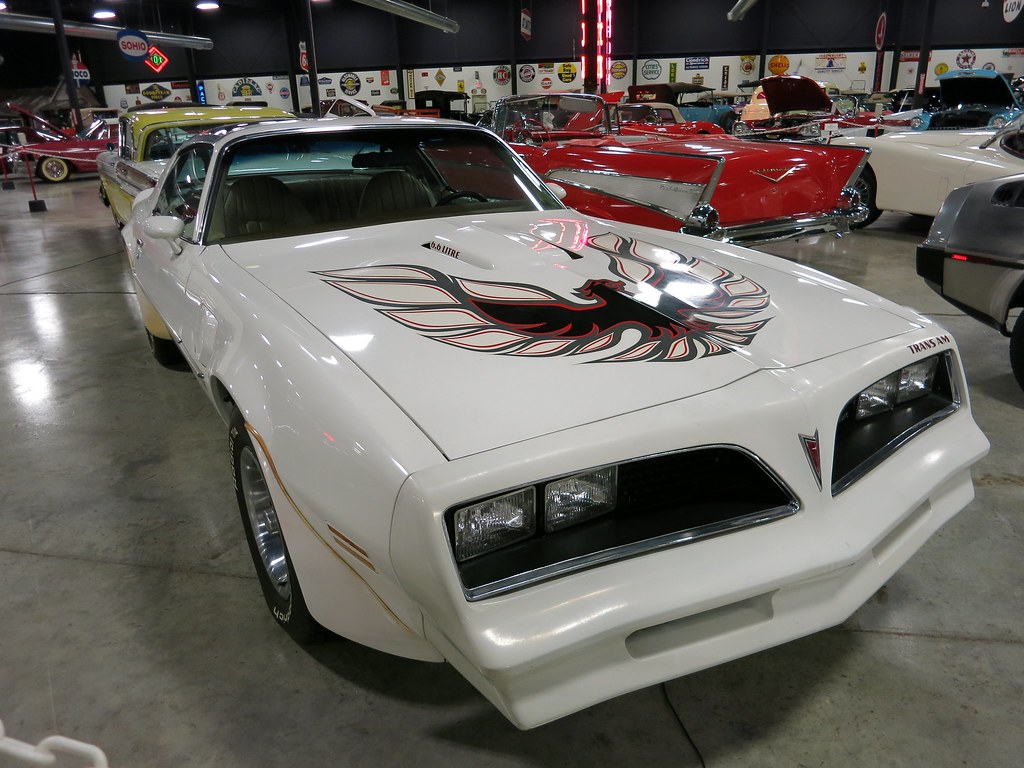
11. Pontiac Trans Am
The Pontiac Trans Am – now there’s a name that conjures images of screeching tires, wind-blown hair, and legendary film appearances. For the Boomer generation, especially those who came of age in the ‘70s and ‘80s, the Trans Am was nothing short of an icon. Celebrated in countless films and television shows, it was intrinsically associated with thrilling performance, undeniable style, and a rebellious spirit. Its engines ranged from inline-six to V8 powerhouses, offering exciting performance, and those striking design elements, particularly the “screaming chicken” hood decal, made it an instant legend, a true symbol of American muscle and charisma that defined a generation’s automotive fantasies.
Yet, among Millennials, the Trans Am often gets overlooked, and not for its lack of historical coolness. The primary reasons stem from its dated technology, the often-higher maintenance costs associated with older performance cars, and a general preference for newer sports cars that boast superior fuel efficiency and a more comprehensive suite of modern amenities. While the raw power and distinctive aesthetics might appeal to a niche segment of younger enthusiasts, the broader Millennial demographic is looking for a more refined, technologically integrated, and less financially demanding daily driver.
It’s a classic case of what was once cutting-edge now feeling, well, a little blunt, especially when compared to today’s precision-engineered vehicles. The “lack of sophistication and refinement” compared to contemporary sports cars is a recurring criticism, as modern vehicles offer a more balanced package of power, handling, and creature comforts. What was a raw, unadulterated thrill ride for Boomers is often seen by Millennials as a car that demands too many compromises, offering a less polished and often more demanding experience in an age of digital dashboards and seamless infotainment.
Ultimately, the enduring legacy of the “Smokey and the Bandit” films might earn the Trans Am a nod of recognition or a moment of nostalgic appreciation at a classic car show, but it rarely translates into genuine desire for ownership among young drivers today. The blend of high maintenance, poor fuel economy, and dated driving dynamics positions it as a cool historical artifact rather than a practical or desirable modern choice, a powerful icon that simply doesn’t align with contemporary automotive values.
Product on Amazon: RMZ City 1:36 Pontiac Firebird Trans Am Toy Car, Diecast Pull Back Model Car, Doors Open, Collection Kids Toy for Aged 3 and up, Gift Black
Brand: RMZ City
Binding: Product Group: Toy
Price: 12.57 USD
Rating: 4.8 Total reviews: 50
Features:
1. [Product Size] 4.8×1.9×1.5 inches(1:36 scale). Package weight: Approx. 0.37 pounds. Suitable for playing.
2. [Good Quality] Detailed interior and exterior trim, using high grade alloy die-cast into form.
3. [Great Diecast Toy Car] Made of non-toxic paint spray, doesn’t contain harmful substances, protecting the safety of children greatly.
4. [Funny Pull Back Car Model] Left and right doors can be opened. Place the car on the ground, press down on the body and pull it back, the car will move forward.
5. [Awesome Toy for Kids] Sturdy body, fine workmanship. Suitable for collections, birthdays, Christmas and decorations. Great for kids, boys, girls and adults.
Shopping on Amazon >>
Car Model Information: 2023 Buick Envision Preferred
Name: Pontiac Firebird
Caption: The second, third, and fourth generations of,the Pontiac Firebird Trans Am
Manufacturer: Pontiac (automobile)
Production: February 23, 1967 – August 30, 2002
ModelYears: 1967 – 2002
Class: Pony car,Muscle car
Platform: GM F platform
Related: Chevrolet Camaro
Layout: Front engine, rear-wheel-drive layout
Categories: 1970s cars, 1980s cars, 1990s cars, 2000s cars, All articles with dead external links
Summary: The Pontiac Firebird is an American automobile built and produced by Pontiac from the 1967 to 2002 model years. Designed as a pony car to compete with the Ford Mustang, it was introduced on February 23, 1967, five months after GM’s Chevrolet division’s platform-sharing Camaro. This also coincided with the release of the 1967 Mercury Cougar, Ford’s upscale, platform-sharing version of the Mustang.
The name “Firebird” was also previously used by GM for the General Motors Firebird series of concept cars in the 1950s.
Get more information about: Pontiac Firebird
Buying a high-performing used car >>>
Brand: Pontiac Model: Trans Am
Price: $20,221 Mileage: 46,554 mi.
Read more about: Relive the Roaring ’60s: A High-Octane Journey Through 14 Legendary Cars That Defined a Golden Era of Automotive Innovation!
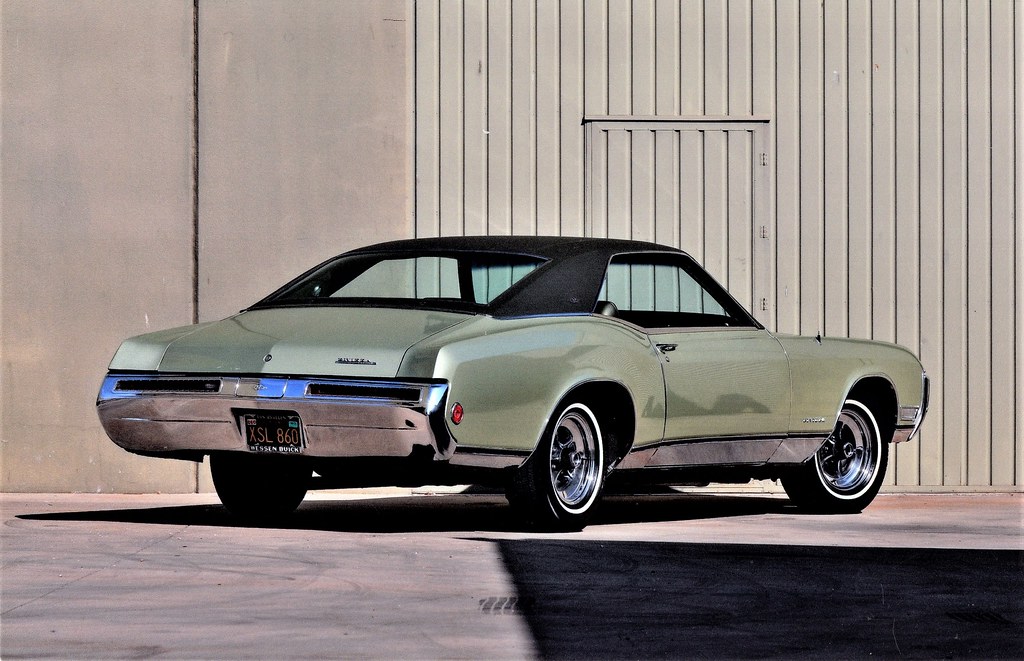
12. Buick Riviera
The Buick Riviera, particularly those “boat-tail” models of the early 1970s, holds a special place in the hearts of many Boomers. It was admired for its daring, distinctive design and its promise of a supremely smooth, comfortable ride. With powerful V8 engines and an unwavering focus on luxury, the Riviera wasn’t just a car; it was a status symbol, a personal luxury coupe that blended bold styling with an undeniable sense of prestige. Its unique aesthetic represented a willingness to push design boundaries, setting it apart from its contemporaries and making it instantly recognizable, a true head-turner in its era.
However, for a generation obsessed with efficiency and often preferring more understated design, the Riviera often struggles to find its footing. Millennials tend to view it as an “outdated gas-guzzler” with a design that they frankly find “too bold for their tastes.” The very “boat-tail” rear window that Boomers admired for its audaciousness is often met with bewilderment or even outright dislike by younger drivers who predominantly favor sleek, aerodynamic lines and a more universally accepted sense of visual harmony. The sheer size alone, often an indicator of inefficiency, is a major deterrent in today’s performance and efficiency-driven market.
So, while the Riviera’s classic design and luxury features might, in theory, appeal to those with a niche penchant for vintage aesthetics and automotive history, the practical drawbacks simply prove too significant for many younger buyers. The combination of its substantial dimensions, poor fuel economy, and the higher maintenance costs associated with such a unique, older vehicle effectively relegate it to the realm of interesting historical artifact rather than a desirable daily driver. Its beauty is undeniable, but it’s a beauty that comes with a considerable cost in terms of modern practicality.
What was once perceived as groundbreaking or commendably luxurious by Boomers now predominantly registers as an outright oddity, a vehicle with very little to commend it in terms of contemporary performance metrics, refined aesthetics that appeal to a broader audience, or lasting style that transcends its specific era. The very elements that made it so singular ensure its prominent place on the expanding list of cars that Millennials are quite content to bypass entirely, making it a curious case study in the subjective nature of automotive appeal.
Product on Amazon: Hot Wheels ’66 Buick Riviera, HW Modified Series, 1:64 Scale Diecast Car, 2/5
Brand: Hot Wheels
Binding: Product Group: Toy
Price: 5.73 USD
Rating: 4.5 Total reviews: 22
Features:
1. COLLECTIBLE MODEL: Authentic 1966 Buick Riviera replica in 1:64 scale, part of the HW Modified series (2/5)
2. DETAILED DESIGN: Features custom paint job, precise body sculpting, and modified styling elements true to Hot Wheels standards
3. DISPLAY READY: Perfect addition to any die-cast collection with its sleek presentation and classic muscle car aesthetics
4. CONSTRUCTION: Die-cast metal body with plastic components for durability and authentic weight feel
5. SIZE SPECIFICATIONS: Measures approximately 3 inches in length, matching standard 1:64 scale proportions
Shopping on Amazon >>
Car Model Information: 1971 Buick Riviera
Caption: 1963 Buick Riviera
Name: Buick Riviera
Predecessor: Buick Super
Manufacturer: Buick
ModelYears: 1963–1993,1995–1999
Class: Personal luxury car
Categories: 1960s cars, 1970s cars, 1980s cars, 1990s cars, All articles with specifically marked weasel-worded phrases
Summary: The Buick Riviera is a personal luxury car that was marketed by Buick from 1963 to 1999, with the exception of the 1994 model year.
As General Motors’ first entry into the personal luxury car market segment, the Riviera was highly praised by automotive journalists upon its high-profile debut. It was a ground-up design on a new GM E platform debuting for the 1963 model year and was also Buick’s first unique Riviera model.
Unlike its subsequent GM E platform stablemates, the Oldsmobile Toronado and Cadillac Eldorado, the Riviera was initially a front engine/rear-wheel drive platform, switching to front-wheel drive starting with the 1979 model year.
While the early models stayed close to their original form, eight subsequent generations varied substantially in size and styling. A total of 1,127,261 Rivieras were produced.
The Riviera name was resurrected for two concept cars that were displayed at auto shows in 2007 and in 2013.
Get more information about: Buick Riviera
Buying a high-performing used car >>>
Brand: Buick Model: Riviera
Price: $22,499 Mileage: 91,150 mi.
Read more about: Relive the Roaring ’60s: A High-Octane Journey Through 14 Legendary Cars That Defined a Golden Era of Automotive Innovation!
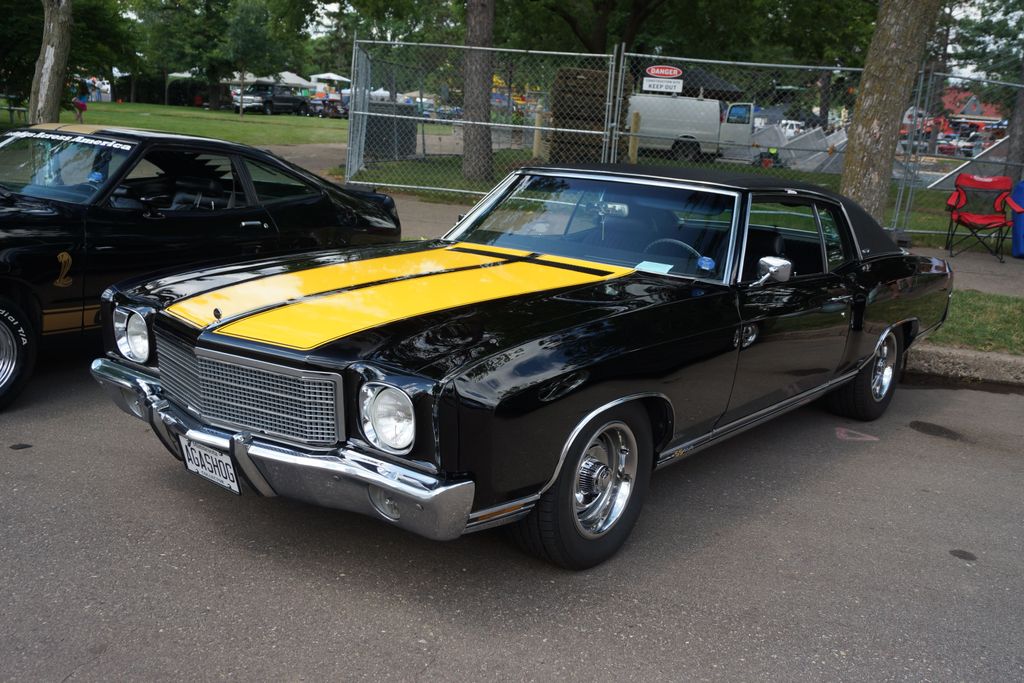
13. Chevrolet Monte Carlo
The Chevrolet Monte Carlo, from its debut in 1970 right through its later iterations, was a popular personal luxury car, and often a muscle car, particularly dominant throughout the 1970s and 1980s. For Boomers, it embodied a desirable blend of performance and style, featuring a range of powerful V8 engines beneath its long, distinctive hood. It offered an affordable entry into luxury, a stylish coupe that made a statement without breaking the bank, and for many, it served as a comfortable, powerful cruiser that was a staple of its era. Its prominence in NASCAR history even added a significant layer of sporting appeal and a connection to American racing heritage.
Yet, despite its retro charm and spacious interior, Millennials often pass over the Monte Carlo with a critical eye. They tend to dismiss it due to its considerable bulk, its inherent fuel inefficiency, and that rather unfortunate perception that it’s an “old man’s car.” While its classic style and powerful engine options might hint at an untapped potential for a unique custom build, younger buyers are overwhelmingly drawn to more modern, significantly more fuel-efficient vehicles that offer a more nimble driving experience and align better with contemporary environmental and economic sensibilities.
The generational chasm here is clear: what was once an accessible blend of style and power is now seen as cumbersome and outdated. The car’s bulky size and often lackluster handling, even with its celebrated NASCAR pedigree, do little to sway younger generations’ perceptions. For them, the Monte Carlo represents a past era where big was beautiful, and fuel economy was an afterthought—a stark contrast to their own priorities of agility, efficiency, and a driving experience that feels truly connected to the road, rather than just floating over it.
Ultimately, while the Monte Carlo might represent a certain kind of automotive freedom and a relaxed cruising style for Boomers, its practical drawbacks in a modern context are simply too great for most Millennials. Its spacious interiors and powerful V8s are acknowledged, but they are consistently overshadowed by the concerns of fuel consumption, maneuverability, and a general lack of contemporary tech. It’s a legend, yes, but one that perhaps only Boomers truly want to relive, leaving the Monte Carlo to be admired more as a historical footnote than a viable option.
Product on Amazon: Greenlight 1/64 1985 Chevrolet Monte Carlo SS, Black, Midwest Diecast 51566-B
Brand: Greenlight
Binding: Product Group: Toy
Price: 19.99 USD
Rating: 4.4 Total reviews: 19
Shopping on Amazon >>
Car Model Information: 2017 Chevrolet Corvette Stingray
Name: Chevrolet Monte Carlo
Manufacturer: Chevrolet
Production: 1969–1987,1994–2007
ModelYears: 1970–1988,1995–2007
Class: Personal luxury car
BodyStyle: coupé
Layout: FR layout
Caption: 2006 Chevrolet Monte Carlo LS
Categories: 1980s cars, 1990s cars, 2000s cars, All Wikipedia articles written in American English, All articles needing additional references
Summary: The Chevrolet Monte Carlo is a two-door coupe that was manufactured and marketed by the Chevrolet division of General Motors. Deriving its name from the city in Monaco, the Monte Carlo was marketed as the first personal luxury car of the Chevrolet brand. Introduced for the 1970 model year, the model line was produced across six generations through the 2007 model year, with a hiatus from 1989 until 1994. The Monte Carlo was a variant of the Pontiac Grand Prix throughout its production.
From 1970 until 1972, the Monte Carlo rode on the unique “A-Special” platform with the Grand Prix, shifting to the standard A-body intermediate chassis from the 1973 through 1977 model years. For 1978, the Monte Carlo line underwent downsizing, but was still considered a midsized coupe. The rear-wheel drive A-body platform of this generation of Monte Carlo was redesignated as the G-body when GM’s front-wheel drive A-body cars were introduced for the 1982 model year. After an abbreviated 1988 model year, the Monte Carlo was replaced by the two-door Chevrolet Lumina.
For the 1995 model year, the Monte Carlo was revived, replacing the two-door Lumina. It shared the front-wheel drive W-platform with the two-door Grand Prix, and was the largest coupe in the Chevrolet lineup. After the 2002 model year, the Grand Prix coupe was discontinued, the Monte Carlo became the largest two-door model produced by an American auto manufacturer.
In response to declining sales of the model line, Chevrolet discontinued the Monte Carlo after the 2007 model year. During much of its production, the Monte Carlo represented the Chevrolet brand in stock car racing. During the 1980s, the Monte Carlo SS was introduced, featuring aerodynamically enhanced styling; as part of its revival, the Monte Carlo again represented Chevrolet in stock car racing from 1995 through its discontinuation.
Get more information about: Chevrolet Monte Carlo
Buying a high-performing used car >>>
Brand: Chevrolet Model: Monte Carlo
Price: $38,514 Mileage: 73,158 mi.
Read more about: Beyond Nostalgia: 12 Classic Boomer Vehicles Younger Generations Dodge and Why They’ve Lost Their Luster
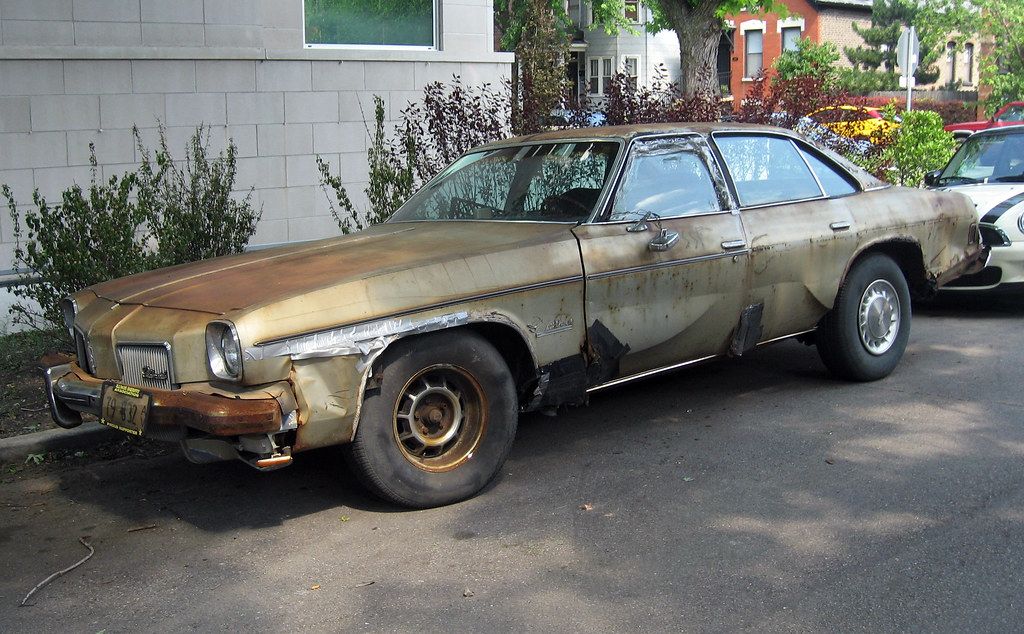
14. Oldsmobile Cutlass Supreme
The Oldsmobile Cutlass Supreme was, in its heyday, a bona fide American success story, routinely ranking among the nation’s best-selling cars. For Boomers, it was cherished for its appealing style and rock-solid reliability, making it a ubiquitous and beloved choice for families and individuals alike throughout the 1960s, 70s, and even into the 80s. With a stylish design and a reliable range of V8 engines, it represented a perfect balance of comfort, aesthetics, and dependable performance, becoming a familiar and trusted presence on countless American driveways and a true symbol of middle-class aspiration.
However, today, Millennials tend to pass over the Cutlass Supreme in favor of cars that offer better overall performance and a host of modern technologies. While its classic design and performance potential, especially in variants like the Hurst/Olds models, could, theoretically, attract a certain segment of younger enthusiasts, the practical drawbacks — most notably its significant fuel inefficiency and the higher maintenance costs associated with older vehicles — significantly limit its broader appeal. What was once a symbol of attainable style and reliability is now often perceived as merely an older, less efficient option, struggling to compete with modern conveniences.
The Cutlass Supreme’s journey from best-seller to overlooked classic is a poignant reflection of changing consumer demands and evolving automotive standards. For a generation prioritizing advanced safety features, seamless connectivity, and stellar fuel economy, the Cutlass Supreme, for all its historical significance, simply doesn’t measure up to modern expectations. Its robust, utilitarian nature, once celebrated as a distinct virtue, is now predominantly viewed as unremarkable, even bland, in an era of exciting, technologically advanced vehicles.
It stands as a powerful reminder that while nostalgia holds sway over one generation, the practical realities and evolving priorities of the next can dramatically redefine what makes a car truly desirable. The Cutlass Supreme, despite its undeniable past glory and immense popularity, proves that even iconic status isn’t always enough to transcend shifting automotive landscapes, making it a compelling case study in generational automotive disconnect.
Product on Amazon: Waterproof Car Cover Compatible with 1978-1997 Oldsmobile Cutlass Supreme Sedan/Coupe Accessories, 210T All Weather Car Covers with Zipper&Lock for Car Dust Snow Rain Hail Protection(Base/S/442)
Brand: SAPUBK
Binding: Unknown Binding Product Group: Automotive Parts and Accessories
Price: 74.98 USD
Rating: 4.6 Total reviews: 33
Color: 201×72×55in 1978-1997 Cutlass
Water Resistance Level: Waterproof
Coverage: Comprehensive
Manufacturer: Amaryhllis
Automotive Fit Type: Vehicle Specific Fit
Features:
1. Custom-fit Car Cover: 201×72×55in, our waterproof car cover replace for 1978-1997 Oldsmobile Cutlass base/Cutlass S/Cutlass Supreme/442 sedan/coupe
2. Premium Material: 1: Outermost is 210T high density waterproof material, can withstands long summer sun exposure and winter rain/snow erosion 2: High reflective aluminum is good at sun-proof and anti-uv, keeps car cool in the sunny day. 3. Inner thicker cotton backing to protect your car’s paint
3. Much Safer with Lock: Equipped with safety lock to ensure that your car cover will not be taken away(please refer to the detailed introduction below this page)
4. Excellent Protection: The full exterior cover provides overall protection of car from all the elements: dust, snow, industrial pollution, bird droppings, leaves, pollens, acid rain etc. and keeps out heat, which, in turn, ensures that your car stays cool in summer
Shopping on Amazon >>
Car Model Information: 2021 Volkswagen Atlas 3.6L SE w/Technology
Name: Oldsmobile Cutlass Supreme
Manufacturer: Oldsmobile
Production: 1965–1997
Layout: FR layout
Successor: Oldsmobile Intrigue
Class: Personal luxury car
Caption: 1970 Oldsmobile Cutlass Supreme
Categories: 1960s cars, 1970s cars, 1980s cars, 1990s cars, All Wikipedia articles written in American English
Summary: The Oldsmobile Cutlass Supreme is a mid-size car produced by Oldsmobile between 1966 and 1997. It was positioned as a premium offering at the top of the Cutlass range. It began as a trim package, developed its own roofline, and rose during the mid-1970s to become not only the most popular Oldsmobile but the highest selling model in its class.
It was produced as a rear-wheel drive two-door hardtop, sedan, and station wagon into the 1980s, and a convertible through 1972. In 1988 Oldsmobile sought to capitalize on the brand equity of the Cutlass Supreme marque by replacing it with a downsized front-wheel drive model based on the General Motors W platform.
When production ended there was no direct replacement for the Cutlass Supreme, although the Intrigue introduced for 1998 was designed in size and price to replace all the Cutlass models.
Get more information about: Oldsmobile Cutlass Supreme
Buying a high-performing used car >>>
Brand: Oldsmobile Model: Cutlass Supreme
Price: $22,273 Mileage: 65,098 mi.
Read more about: Unearthing the Unexpected: 10 Forgotten 1980s GM Muscle Cars That Command Attention Today
As we conclude this deep dive into the fascinating, and sometimes frustrating, generational divide in automotive appeal, it becomes abundantly clear that cars are far more than just metal, glass, and rubber. They are cultural artifacts, direct reflections of the aspirations, values, and technological capabilities of the eras that birthed them. What once signified freedom, luxury, or raw power for Baby Boomers – those expansive, V8-powered leviathans and quirky, pioneering designs – now often registers as cumbersome, inefficient, or simply outdated for Millennials. This isn’t a judgment, merely an observation of how the relentless march of progress, coupled with evolving environmental consciousness and economic realities, continuously reshapes our desires. So, while these vintage legends will undoubtedly continue to gleam at car shows, their future as daily drivers in the hands of younger generations seems destined to remain largely a thing of the past, a poignant reminder that every generation, indeed, paves its own road.


